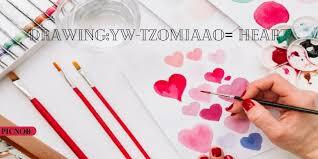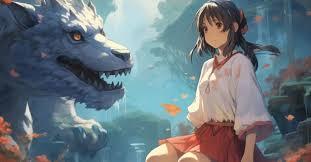From Sketch to Soul: A Deep Dive into Drawing:yw-tzomiaao= heart

Introduction to Drawing:yw-tzomiaao= heart
Drawing is more than just putting pencil to paper. It’s a journey that begins with a simple sketch and evolves into an expression of the soul. From capturing fleeting moments to exploring intricate emotions, drawing serves as a bridge between our thoughts and the canvas. Whether you’re doodling in the margins or meticulously crafting your next masterpiece, each stroke carries meaning.
Have you ever wondered about the stories behind those lines? The history of drawing reveals its powerful impact on society throughout the ages. Artists have wielded their tools not only to create but also to communicate ideas, challenge norms, and reflect cultural shifts.
As we explore this fascinating world—from various techniques to essential materials—you’ll see how anyone can embark on this creative adventure. Drawing isn’t just a skill; it’s a pathway for self-discovery and healing. So grab your favorite sketchbook, unleash your creativity, and let’s dive deep into this captivating art form together!
The history of drawing and its impact on society
Drawing has been a fundamental form of expression since prehistoric times. Early humans etched images onto cave walls, capturing their surroundings and experiences. These primitive sketches laid the groundwork for visual storytelling.
As civilizations progressed, drawing evolved into a vital tool for artists and scholars alike. The Renaissance brought forth masterful techniques that transformed how we perceive art, creating lasting impacts on culture and society.
In the 18th and 19th centuries, drawing became essential in scientific illustration and documentation. It bridged art with science, allowing complex ideas to be communicated visually.
The rise of modernism further expanded the boundaries of drawing as an art form. Artists experimented with new styles that challenged traditional norms, reflecting societal changes.
Today, drawing continues to inspire innovation across various fields—artistic or otherwise—showcasing its enduring influence throughout history.
Different techniques and styles of drawing
Drawing offers a vast array of techniques and styles, each with its own charm. From the delicate lines of pencil sketches to the bold strokes of charcoal, every medium brings something unique.
Realism focuses on detail and accuracy, capturing subjects as they appear in life. In contrast, abstract drawing frees artists from realism, allowing emotions and ideas to take center stage through shapes and colors.
Ink wash creates mesmerizing gradients by blending ink with water. This technique invites fluidity into your work, evoking a sense of movement.
Other popular styles include cartooning and manga. These forms embrace exaggeration and whimsy, appealing especially to younger audiences or fans of pop culture.
Exploring different techniques can ignite creativity. Each style challenges you to view the world differently while honing your skills in new ways.
Materials needed to start Drawing:yw-tzomiaao= heart
Starting your drawing journey requires more than just talent; the right materials make a significant difference.
For beginners, a simple sketchbook is essential. Choose one with smooth pages that can handle various mediums without bleeding through.
Pencils are your best friends in this process. A range of graphite pencils—from hard to soft—will give you versatility in line quality and shading techniques.
Don’t forget erasers! Both kneaded and rubber erasers serve different purposes, offering precision when correcting mistakes or adjusting details.
Incorporating colored pencils or markers adds vibrancy to your work. They allow for creativity beyond monochrome sketches.
Invest in some blending tools like tortillons or stumps for seamless shading transitions. These small additions elevate artwork significantly, making it feel polished and complete.
Step-by-step guide for beginners: from sketching to shading
Start with basic shapes. Begin your drawing by sketching simple forms like circles, squares, and triangles. These will be the foundation for more complex subjects.
Next, lightly outline your main subject using these shapes as guides. Don’t press too hard; you want to keep it easy to erase mistakes later.
Once you’re satisfied with the outline, move on to detailing. Add features such as eyes or textures but maintain light pressure on your pencil.
Shading brings depth and life. Use a softer pencil for darker areas while keeping lighter sections untouched. Blend gently with a finger or blending stump for smooth transitions.
Experiment with different techniques like cross-hatching or stippling to create unique effects in your shading process.
Remember, practice is key! Each stroke builds confidence and skill over time.
The connection between drawing and the soul
Drawing transcends mere lines on paper; it connects deeply with our inner selves. Each stroke can reveal emotions we might struggle to express verbally.
When you draw, your subconscious takes the lead. The colors and shapes chosen often reflect feelings and thoughts hidden beneath the surface. It’s a dialogue between your hand and heart, communicating what words cannot.
This art form invites introspection. As you sketch, you enter a meditative state where worries fade away. Your soul finds freedom in creativity, offering clarity amidst chaos.
Many artists describe their work as cathartic—a release of pent-up emotions or experiences onto the canvas. This connection is not just artistic but profoundly personal, making drawing an intimate journey into one’s essence.
Embracing this practice allows for deeper self-understanding while fostering growth and healing through expression. Drawing becomes more than just a hobby; it evolves into a pathway toward soulful discovery.
Drawing as a form of therapy and self-expression
Drawing serves as a powerful tool for therapy and self-expression. It allows individuals to communicate feelings that words often fail to capture.
When we put pencil to paper, emotions flow freely. Anxiety, joy, sadness—each stroke can reflect our internal states. It’s a personal journey where the canvas becomes a safe space for exploration.
Many therapists use drawing in their practice. This approach helps clients articulate complex thoughts and experiences without fear of judgment. The act itself is cathartic; it releases pent-up feelings while fostering mindfulness.
For artists at heart or those new to sketching, this medium invites creativity into daily life. Even simple doodles can bring clarity amidst chaos. Through drawing, one finds solace and connection with their inner world—a true reflection of the soul laid bare on paper.
Tips for incorporating Drawing:yw-tzomiaao= heart
Incorporating drawing into your daily routine can be both rewarding and enjoyable. Start small; dedicate just ten minutes a day to sketch whatever inspires you. This could be objects around your home, plants in the garden, or even scenes from your window.
Create a designated space for your art supplies. A tidy area encourages creativity and makes it easier to dive in at a moment’s notice. Keep essentials like pencils, erasers, and paper within reach.
Experiment with different mediums such as charcoal, ink, or pastels. Each offers unique textures that can ignite new ideas.
Join local workshops or online classes to connect with other artists. Sharing experiences enhances motivation and builds community.
Don’t hesitate to keep an inspiration journal filled with doodles and thoughts—this will fuel your passion for drawing even more!
Famous artists who have used drawing as a medium
The world of Drawing:yw-tzomiaao= heart has been graced by countless talented artists who have made significant contributions to the medium. From the delicate sketches of Leonardo da Vinci to the expressive doodles of Jean-Michel Basquiat, each artist has left an indelible mark on our understanding and appreciation of drawing.
Pablo Picasso transformed traditional perspectives with his innovative approach, showcasing how a few lines can convey complex ideas. Meanwhile, Frida Kahlo used her drawings as a means to express her inner struggles and emotions, connecting deeply with viewers through vulnerability and authenticity.
Contemporary artists like David Hockney continue this legacy, experimenting with digital tools while retaining the essence of hand-drawn art. Their work invites us to explore not just techniques but also the stories behind each stroke.
Drawing is more than mere representation; it’s a personal journey that reflects individual experiences and thoughts. The passion these artists bring into their creations inspires many aspiring drawers today to pick up their pencils and embark on their own artistic adventures.
As you dive deeper into your own exploration of drawing, remember that you follow in the footsteps of greats who have shaped this timeless art form. Each line drawn is not only an expression but also a connection—connecting hearts across time and space through creativity.





